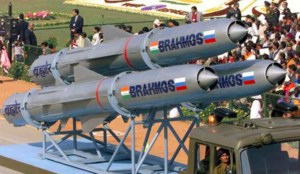Correct interpretation of signals and intentions is paramount in state covert operations. The inability of an actor to correctly interpret a rival’s intention could trigger an unintended and overreacted response, potentially leading to unwanted escalation and military conflicts. This is especially true in the twenty-first century, where information warfare and covert operations are increasingly taking place into the digital domain.
The characteristics of cyberspace make signaling intentions particularly difficult for different reasons. First, successful operations in the digital sphere require secrecy. Unveiling one’s set of capabilities or information about exploited vulnerabilities may jeopardize the entire plan. Revealing particular details about the operation would give the target the ability to take countermeasures and patch vulnerabilities, nullifying the attacker offensive capabilities.
Regarding secrecy, an important distinction exists between non-state and state entities. Politically motivated non-state actors may claim responsibility for different reasons. For instance, in March 2015, ISIS cyber army, the digital force of the so-called Islamic State of Iraq and the Levant, claimed responsibility for hacking several American websites[1]. Terrorist organizations, such as ISIS, are mostly scattered and elusive adversaries with few visible interests at stake. The absence of critical physical facilities to defend make such actors more likely to claim responsibility for their operations.
By contrast, states face higher constraints in revealing cyber operations. States have visible and permanent interests which must be preserved avoiding retaliation in the physical realm. Revealing successful cyber offensive operations may prompt a military response from the targeted state, especially if the victim of the attack is a stronger military and political power. In such situations, costs at stake may be higher than political benefits of using cyber tools to gain a position of advantage in state rivalries.
However, concealing the attacker’s identity may be limited to peripheral forms of conflicts. As highlighted by Erik Gartzke, Associate Professor of Political Science at the University of California, “Most forms of political conflict, encourage disclosing an initiator’s identity”. The fact that coercion requires attribution may be one of the reasons that lie behind the issue of credible signaling in the cyber domain[2].
As mentioned above, a direct consequence of the secrecy requirement for successful operations in cyberspace is a credibility problem. As stressed by Erik Gartzke and Jon Lindsay, Associate Professor at the School of Cybersecurity and Privacy at the Georgia Institute of Technology, “the biggest obstacle to cyber coercion is the difficulty of credible signaling about potential harm when it depends on secrecy to be harmful”[3]. This leads to a second problematic aspect of correct interpretation of signals in cyberspace, that is to say, the ability of a state to send costly signals of resolve to an adversary.
Sending costly signals implies the existence of a common communicative framework between States engaged in competitive rivalries. However, as underlined by researchers Keren Yarhi Milo and Austin Carson “leaders often struggle with understanding a message as much as diagnosing its credibility”[4]. The unconventional and relatively new nature of cyberspace means that the way interactions play out in cyberspace are likely to be less intelligible for signaling political costs. Therefore, a targeted state can hardly be expected to perceive the sender’s signal of resolve.
Conclusion
The ambiguity and complexity of the fifth domain are likely to result in significant challenges to correctly interpret states intentions conveyed through digital means. It is important, however, to recognize that signaling in cyberspace can play a crucial role in shaping State behaviors and strengthening conflict prevention. As underlined by the authors of the academic book Cyber Strategy: The Evolving Character of Power and Coercion, “the ambiguity decreases the certainty of the message, but not necessarily the utility of the signal to shape rival behavior”. Likewise, the changing nature of cyberspace can offer unique opportunities in the field of state communication and diplomacy, providing an ideal theatre for managing tensions and averting crisis escalation.
Picture credits: media.defense.gov
[1] 11/9: Isis rivendica attacchi hacker contro siti Usa, SWI swissinfo.ch, September 15, 2015.
[2] E. Gartzke, “The Myth of Cyberwar. Bringing War in Cyberspace Back Down to Earth”, International Security, Vol. 38, N°2 Fall 2013, p. 47.
[3] E. Gartzke, J. Lindsay, “Coercion through Cyberspace: The Stability-Instability Paradox Revisited”, In Kelly M. Greenhill and Peter J. P. Krause, eds., The Power to Hurt: Coercion in Theory and in Practice, Oxford University Press, 2016.
[4] Austin Carson & Keren Yarhi Milo (2017) Covert Communication: The intelligibility and Credibility of Signaling in Secret, Security Studies, 26:1, 124-156.






Be First to Comment